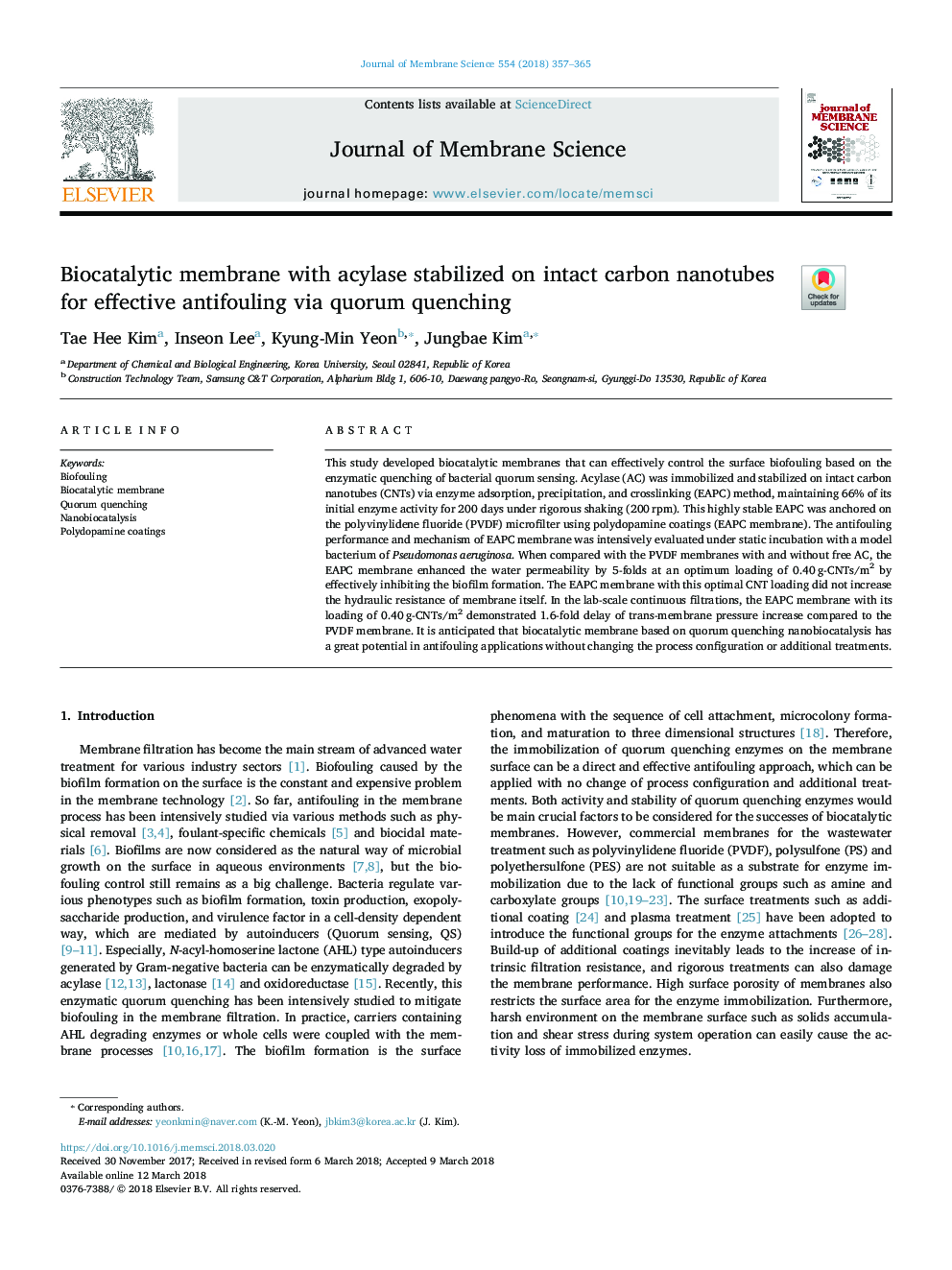| Article ID | Journal | Published Year | Pages | File Type |
|---|---|---|---|---|
| 7019980 | Journal of Membrane Science | 2018 | 9 Pages |
Abstract
This study developed biocatalytic membranes that can effectively control the surface biofouling based on the enzymatic quenching of bacterial quorum sensing. Acylase (AC) was immobilized and stabilized on intact carbon nanotubes (CNTs) via enzyme adsorption, precipitation, and crosslinking (EAPC) method, maintaining 66% of its initial enzyme activity for 200 days under rigorous shaking (200â¯rpm). This highly stable EAPC was anchored on the polyvinylidene fluoride (PVDF) microfilter using polydopamine coatings (EAPC membrane). The antifouling performance and mechanism of EAPC membrane was intensively evaluated under static incubation with a model bacterium of Pseudomonas aeruginosa. When compared with the PVDF membranes with and without free AC, the EAPC membrane enhanced the water permeability by 5-folds at an optimum loading of 0.40â¯g-CNTs/m2 by effectively inhibiting the biofilm formation. The EAPC membrane with this optimal CNT loading did not increase the hydraulic resistance of membrane itself. In the lab-scale continuous filtrations, the EAPC membrane with its loading of 0.40â¯g-CNTs/m2 demonstrated 1.6-fold delay of trans-membrane pressure increase compared to the PVDF membrane. It is anticipated that biocatalytic membrane based on quorum quenching nanobiocatalysis has a great potential in antifouling applications without changing the process configuration or additional treatments.
Related Topics
Physical Sciences and Engineering
Chemical Engineering
Filtration and Separation
Authors
Tae Hee Kim, Inseon Lee, Kyung-Min Yeon, Jungbae Kim,
